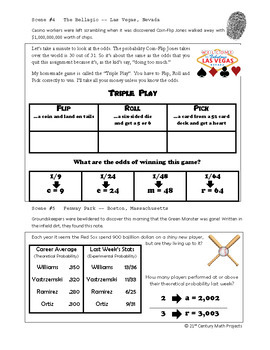Measures of Center & Variance Unit Bundle - Distance Learning Compatible
- Zip
- Google Apps™

Products in this Bundle (37)
showing 1-5 of 37 products
Bonus
Description
This is a selection of my Measures of Center & Variance resources all in a money saving Essential Bundle! You save significant money and time versus purchasing these separately!
Essential Bundles are designed to give you everything you need to rock your unit. Warmups, Notes, Activities, Games, Exit Tickets, and Tests. You will find a selection of my Drive Instruction, Escapes, Boot Camp, Adventures, Whodunnits, CSI, Person Puzzles, STEM-ersions, Herowork, TableTop and my 21st Century Math Projects. The content of the bundle is subject to change as I add new brands.
***If the individual resource has Distance Learning in its title, there is a Google Slides version that has been added to it***
If you need to ratchet engagement to the next stratosphere with a COMPLETE CURRICULUM with over 4,000+ pages of content.
•21st Century Pre-Algebra –- the Entire Curriculum
Looking for more Pre-Algebra units?
•Greatest Common Factor & Least Common Multiple
•Measures of Central Tendency & Variance
For more tips, tricks and ideas check out the Clark Creative Education Blog
And join our community where I post ideas, anecdotes, elaborations & every once in a while I pass out TPT gift cards! And jokes! I do jokes too!
Clark Creative Education Facebook Page
Terms of Use
This product includes a license for one teacher only for personal use in their classroom. Licenses are non-transferable, meaning they can not be passed from one teacher to another. No part of this resource is to be shared with a colleague or used by an entire grade level, school, or district without purchasing the proper number of licenses. If you are a coach, principal, or district interested in transferable licenses to accommodate yearly staff changes, please contact me for a quote at teach@clarkcreativeeducation.com
This resource or answers to the questions may not be uploaded to the internet where it is publicly available in any form including classroom/personal websites, network drives or student Prezis (can be made private), unless the website or app is password protected and can only be accessed by students.
Thank you for respecting my work!




